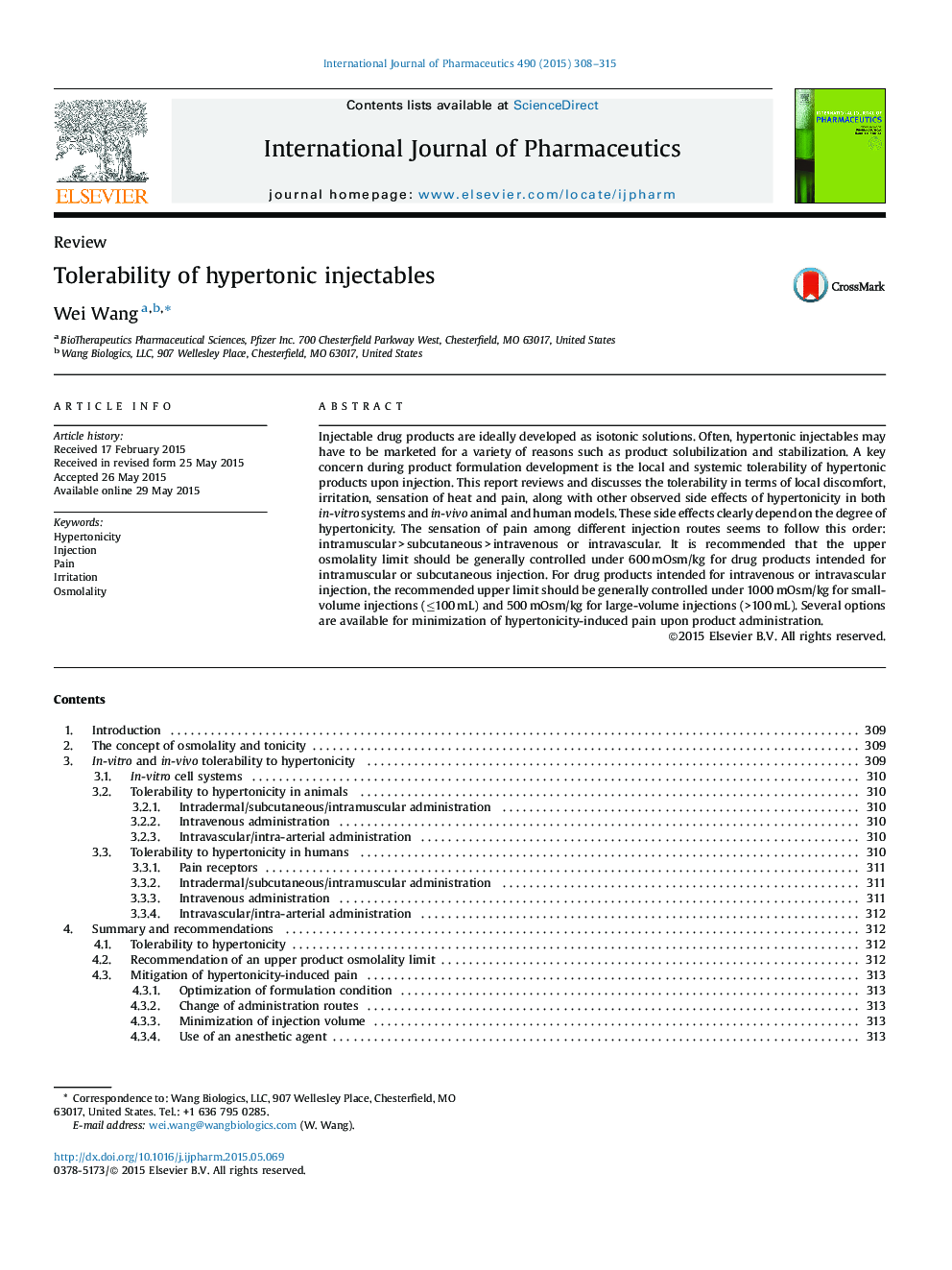| Article ID | Journal | Published Year | Pages | File Type |
|---|---|---|---|---|
| 2501292 | International Journal of Pharmaceutics | 2015 | 8 Pages |
Injectable drug products are ideally developed as isotonic solutions. Often, hypertonic injectables may have to be marketed for a variety of reasons such as product solubilization and stabilization. A key concern during product formulation development is the local and systemic tolerability of hypertonic products upon injection. This report reviews and discusses the tolerability in terms of local discomfort, irritation, sensation of heat and pain, along with other observed side effects of hypertonicity in both in-vitro systems and in-vivo animal and human models. These side effects clearly depend on the degree of hypertonicity. The sensation of pain among different injection routes seems to follow this order: intramuscular > subcutaneous > intravenous or intravascular. It is recommended that the upper osmolality limit should be generally controlled under 600 mOsm/kg for drug products intended for intramuscular or subcutaneous injection. For drug products intended for intravenous or intravascular injection, the recommended upper limit should be generally controlled under 1000 mOsm/kg for small-volume injections (≤100 mL) and 500 mOsm/kg for large-volume injections (>100 mL). Several options are available for minimization of hypertonicity-induced pain upon product administration.
Graphical abstractFigure optionsDownload full-size imageDownload high-quality image (58 K)Download as PowerPoint slide
